Passing down family heirloom from one generation to another isn’t just a tradition but a promise that one is never willing to break.
A woman shared a story of how this beautiful tradition turned ugly because of her new husband’s demand.
Asking whether she was right or wrong, she turned to Reddit and explained that there was this precious piece of jewelry, a green emerald necklace, that has been passed down to the eldest child of the family on their fourteenth birthday. This tradition existed for many years.
The 35-year-old woman further added that her daughter Emily would be turning 14 in January 2024, and that she has been planing to give the necklace to her, as she always wanted.
However, some two years ago, OP tied the knot to her husband Joey, who also has a daughter, Sophia, who’s around the same age as Emily.
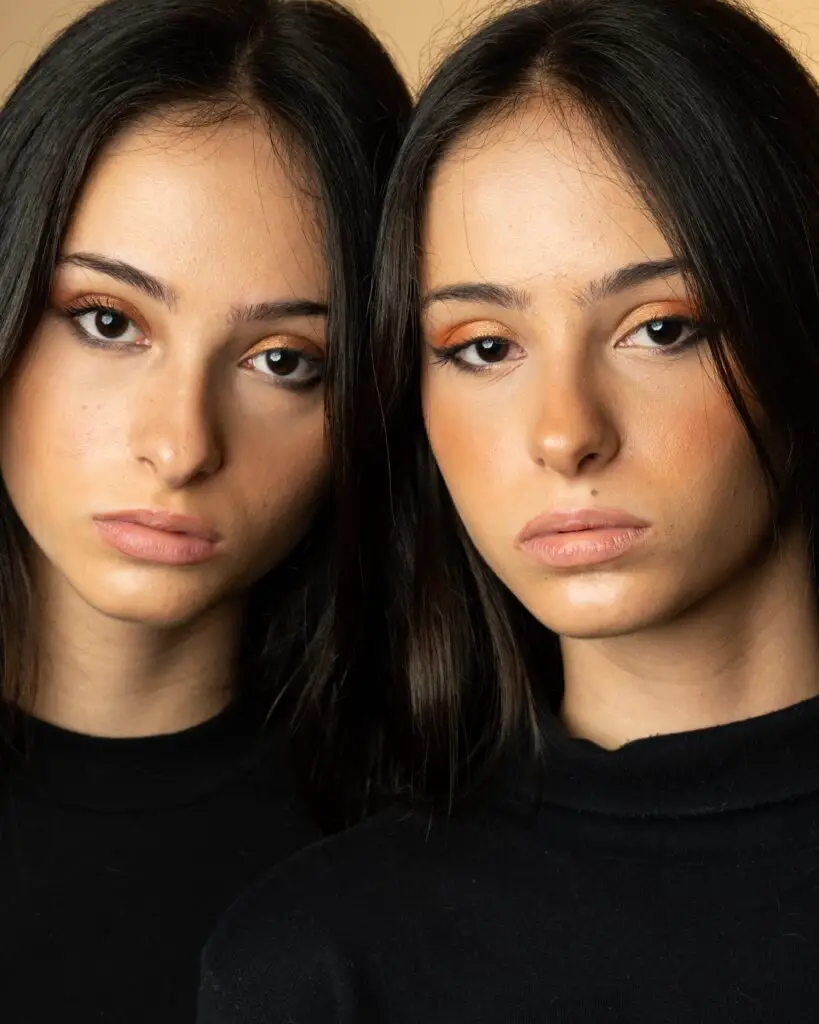
One day, while discussing Christmas gifts, Joey mentioned something that made OP’s blood boil. He suggested that she give the necklace to Sophia and that it would mean a lot to his daughter because it would show that OP truly accepts Sophia as her own daughter.
The woman explained that Emily knew of the tradition and that she was already looking forward to the necklace, but Joey insisted.
What’s most, he called her self-centered and told her that if her daughter really wanted a necklace she could simply order one on Amazon for her.
Despite his constant insisting, OP said she won’t be giving the necklace to Sophia, but her husband got mad and gave her the silent treatment. He even shared what happened with his mother and sister who supported him and told him his wife was selfish and biased.
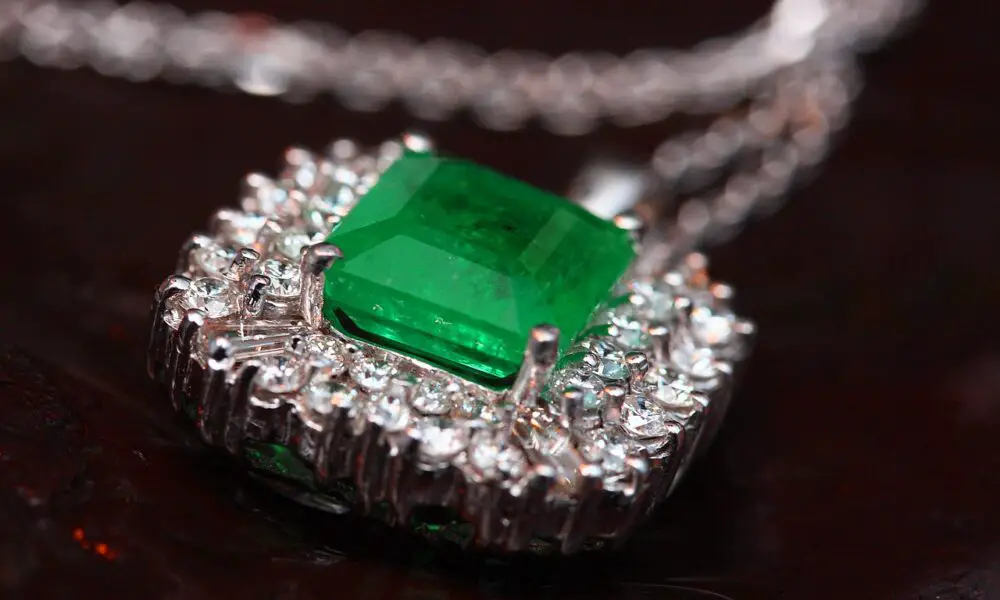
The woman asked fellow Redditors to give her advice, and as expected, most of them were in her favor.
“You’re not favoring one kid over another. Emily is your kid and the necklace is hers. Your [stepdaughter] is not entitled to anything. I would have told him that his daughter can get the knockoff from Amazon if it’s that important to him,” one user wrote.
They then added: “That being said, you need to put the necklace in a safe place like a box in the bank or something because trust me, as soon as Emily has it, it’s going to ‘disappear’ or be broken by ‘accident.’”

“It needs to be locked up in a safe place so that neither your [stepdaughter] nor your husband can get their hands on it. I would sit down with Emily and explain why you are doing so and that while you consider it hers, it’s best to keep it safe,” another person wrote.
My MIL Asked to Have Our Kids for a Week over the Holidays – When I Went to Pick Them Up, My Heart Shattered

When my mother-in-law insisted on hosting my kids for a holiday break, I thought it was harmless—grandma bonding time and a little breather for me. What I didn’t expect was the gut-wrenching discovery that would change everything about how I saw her.
I’m Abby, 34, and I’ve been married to my husband, Brad, for seven years. We have two kids: Lucas, 8, and Sophie, 6. My mother-in-law, Jean, is in her late 60s. We’ve always had what I’d call a cordial relationship—polite smiles, small talk, the occasional dinner invite.

Woman and her mother in law preparing dinner | Source: Midjourney
But Jean has always been… intense. There’s this energy about her, you know? Like she’s trying to prove she’s the perfect grandmother, but she can be controlling.
“She’s just old-fashioned,” Brad would say with a shrug whenever I mentioned it. “She means well.”
I tried to believe that. For years, I brushed off the little things. Her insistence on calling Lucas her boy or the time she scolded Sophie for eating with her hands, saying, “Not under my roof, young lady!”

Senior woman having dinner with her grandchild | Source: Midjourney
But when Jean called me last month, her voice cheerful, and asked, “Abby, how would you feel about me taking Lucas and Sophie for a whole week during their holiday break?” my stomach did a tiny flip.
“A week?” I repeated, caught off guard.
“Yes! I’d love to have them all to myself—just spoil them rotten. You and Brad could use the time, couldn’t you? A little break?”
I glanced at Brad, who gave me a thumbs up. “They’ll have fun,” he added.
“Okay,” I agreed hesitantly.

Woman on phone | Source: Midjourney
She practically squealed with excitement. “Oh, don’t you worry about a thing, dear. They’ll be in good hands.”
Before sending them off, I gave Jean $1,000 for their expenses.
“Jean,” I said as I handed her the envelope, “this is just to make sure you don’t have to dip into your savings for food or anything they might need this week.”
She looked surprised at first but then beamed. “Oh, Abby, that’s so thoughtful of you! Don’t worry, I’ll put it to good use. These kids are going to have the best week ever.”

Woman handing an envelope to her mother in law | Source: Midjourney
The week crawled by, slower than I expected. I thought I’d enjoy the quiet, but I found myself reaching for my phone to call Lucas and Sophie more often than I should have.
When the day finally came to pick them up, I was practically vibrating with excitement. I couldn’t wait to see their little faces and hear about their week. But as I pulled up to Jean’s house, I felt uneasy.
The house looked the same as always, but something felt… wrong. Maybe it was just me being silly. Or maybe it was the way Jean opened the door.
“Abby! You’re here!” she greeted me with a smile that didn’t quite reach her eyes.
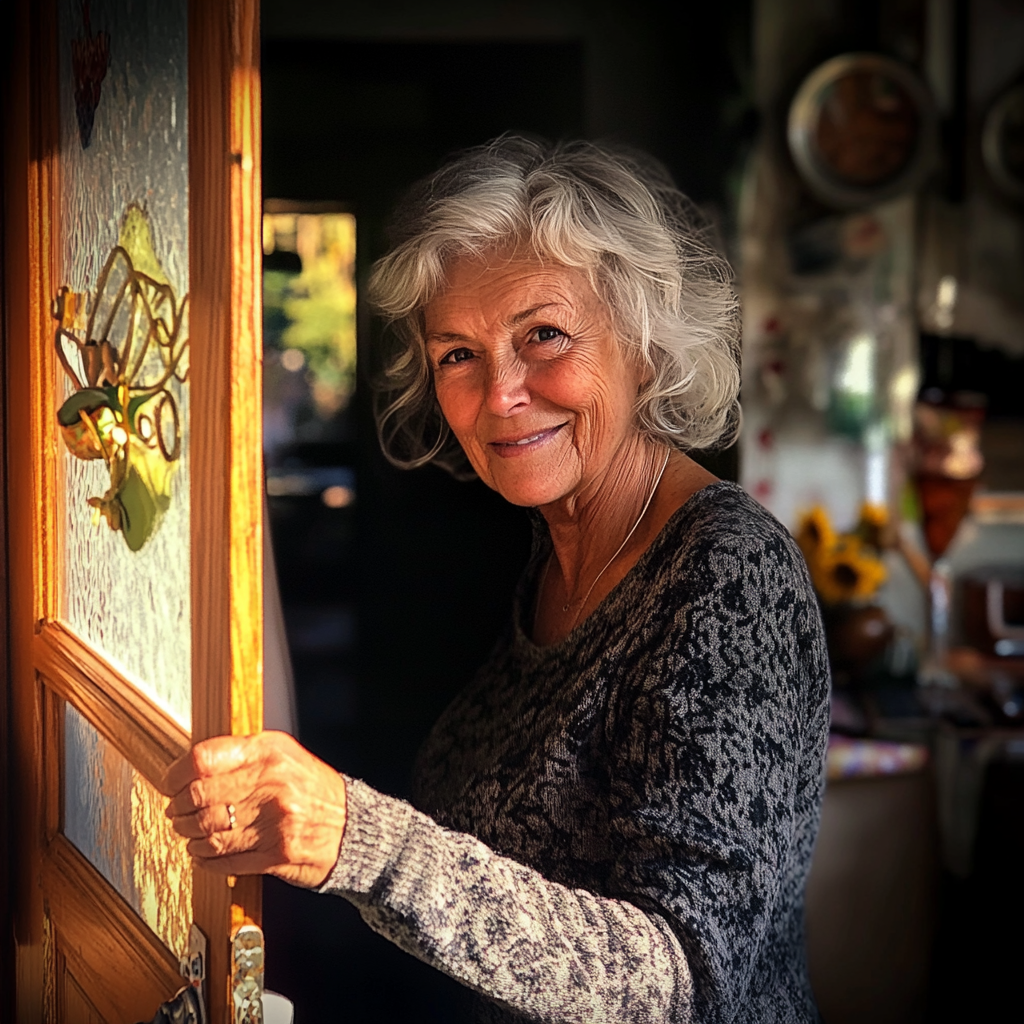
Senior woman opening her door | Source: Midjourney
“Hi, Jean! How were they?” I asked, stepping inside.
“Oh, wonderful,” she replied, her voice shaky. But something about her demeanor felt… off. She was too cheerful, too composed like she was holding onto a script.
I glanced around the house, expecting to hear the usual chaos of toys clattering or kids yelling. But the house was silent. Dead silent.
“Where are the kids?” I asked again, glancing around the empty living room. Normally, by now, they’d be running to me with hugs and excited stories.

Anxious woman in a large living room | Source: Midjourney
Jean’s smile didn’t waver, but something was unsettling about the way she clasped her hands together. “Oh, they’re inside,” she said breezily, gesturing toward the house. “They’ve been so busy today—lots of work.”
I frowned. “Work? What kind of work?”
Jean chuckled nervously and waved her hand like I was being silly. “Oh, just little things. Helping out their grandma. You know how kids are, always eager to lend a hand!”
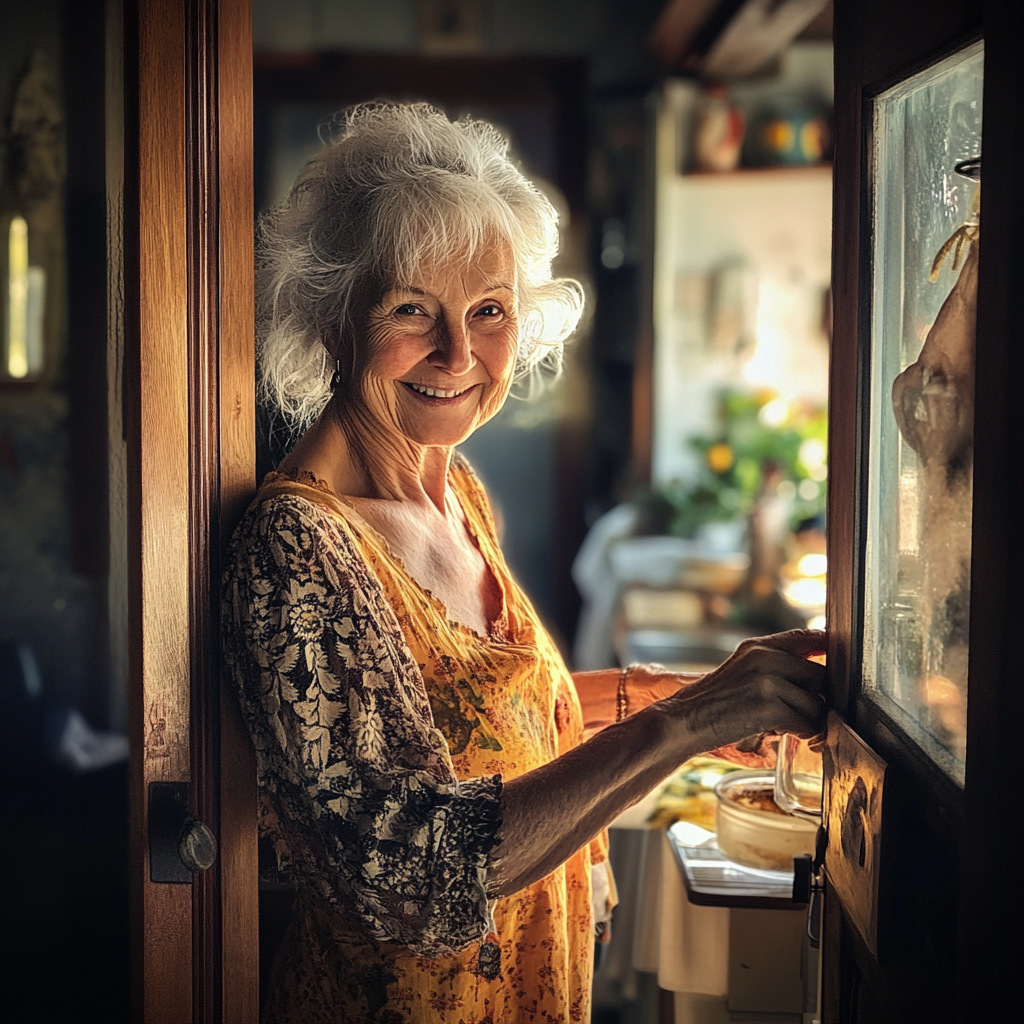
Senior woman smirking | Source: Midjourney
I didn’t know what she meant by “work,” but her tone was off—too sweet, too dismissive. My motherly instincts kicked in, and I felt uneasy.
“Where exactly are they, Jean” I asked, my voice firm now.
Her eyes darted toward the hallway, then back at me. “In the backyard,” she said finally. “They’ve been helping me with the garden. They’re such little troopers!”
I didn’t wait for more excuses. I followed the faint sounds of voices to the sliding glass door. As I stepped outside, the cool air hit me, but it did nothing to stop the wave of dread washing over me.

Anxious woman in the backyard. | Source: Midjourney
“Lucas? Sophie?” I called out.
Then I saw them. My heart sank.
Lucas and Sophie stood there, their small faces smeared with dirt, their eyes filled with exhaustion and relief as they clung to me. Lucas’ clothes were worn and covered in stains, and Sophie’s shirt had a tear on the shoulder. Neither outfit looked familiar—certainly not what I had packed for them.

Boy and girl digging in the garden | Source: Midjourney
“Mom!” Lucas gasped, throwing his arms around me. Sophie followed, her tiny frame trembling as she buried her face into my side.
“What is going on here?” I demanded, turning to Jean, my voice shaking with anger. “Why are they out here like this? They were supposed to be having fun, not working!”
Lucas looked up at me, his voice quivering. “Grandma said we had to help. She told us if we worked hard, we’d go to the park… but we never went, Mom.”
Sophie added, “She made us dig all day, Mommy. I wanted to stop, but she said we had to finish first.”

Exhausted little girl standing in the garden | Source: Midjourney
I turned to Jean, who was now standing a few feet away, her arms crossed defensively.
“Jean!” I shouted, my voice breaking. “You promised me you’d spoil them this week, not turn them into laborers! What is this?!”
Jean’s face flushed, and she shifted awkwardly on her feet. “Oh, don’t exaggerate, Abby,” she said, her tone dismissive. “They were eager to help. And why not? A little hard work never hurt anyone. They’ve learned valuable lessons about responsibility and discipline.”
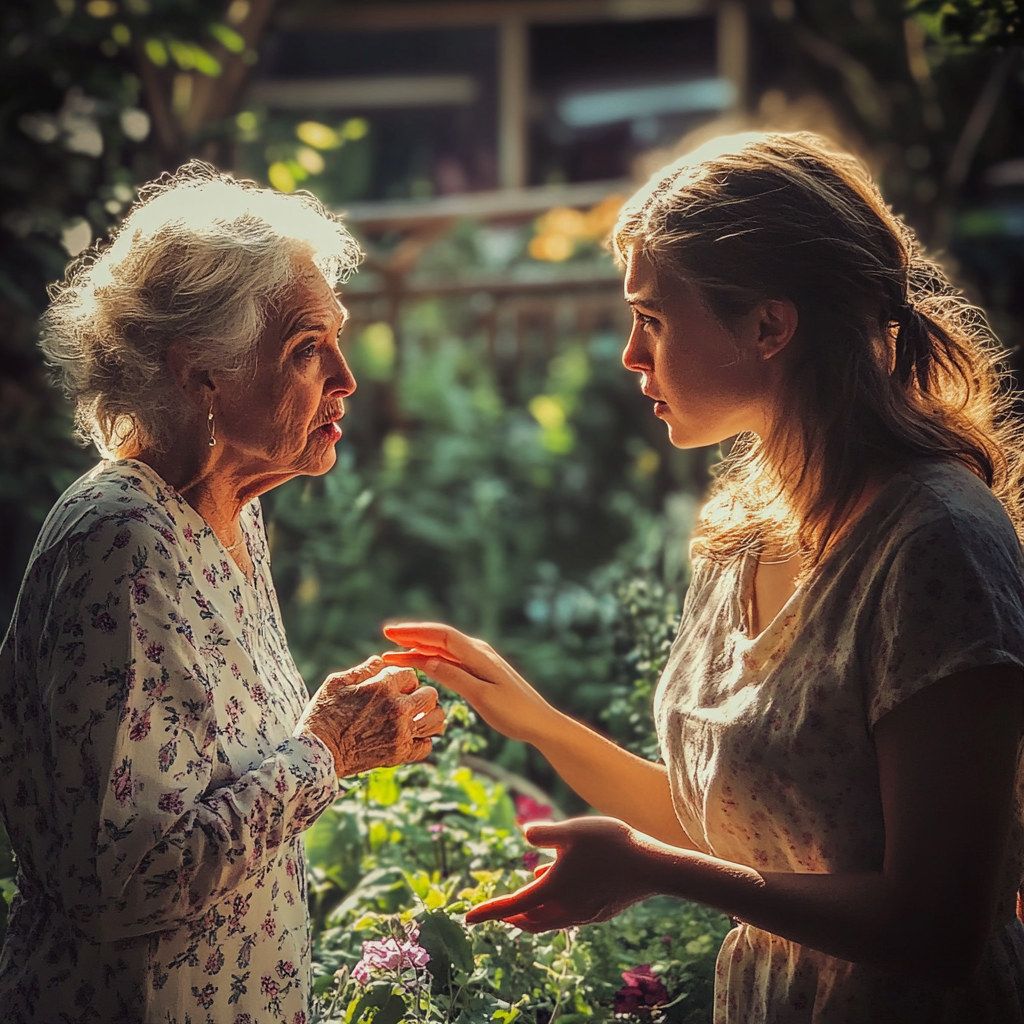
Senior woman arguing with her daughter-in-law | Source: Midjourney
“Responsibility? Discipline?” My voice rose, trembling with rage. “They’re children, Jean! They’re supposed to be playing, laughing, being kids—not breaking their backs in your garden! How could you think this was okay?”
Jean threw up her hands, her voice defensive now. “They need to learn that life isn’t all fun and games! You’re raising them to be spoiled, Abby. I was just trying to help!”
I took a deep breath, trying to steady the storm of emotions swirling inside me. I couldn’t let my anger consume me, not in front of the kids. But I needed answers.

Disappointed woman | Source: Midjourney
“Jean,” I said, my voice low and controlled, “where’s the $1,000 I gave you for groceries and activities?”
She hesitated, her gaze darting toward the ground. “Oh, I didn’t need to use it for groceries,” she said, forcing a casual shrug. “The kids didn’t need all that food. And I thought… I thought I could use the money for… other things.”
My stomach churned. “Other things? What do you mean by that?”
Jean’s face turned red as she mumbled, “I… I didn’t use the money for the kids. I’ve been struggling with my bills, and I thought if I could get some help with the house and the garden, I could save some money.”

Senior woman arguing with her daughter-in-law | Source: Midjourney
For a moment, I couldn’t speak. The betrayal hit me like a punch to the gut. “So, you used my children as free labor?” I said, my voice trembling.
She flinched but didn’t deny it. “It wasn’t like that, Abby,” she insisted, her voice defensive. “I thought it would be good for them—teach them hard work.”
“Hard work?” I repeated, my voice rising. “They’re kids, Jean! I gave you that money so you could give them a week of fun and memories. Not… this.” I gestured toward the backyard, where Lucas and Sophie sat on the porch, their small faces pale and weary.

Tired boy and girl sitting on the porch | Source: Midjourney
It hit me then—this wasn’t just about the garden. Jean had always tried to exert control, to show she knew best, and now she’d dragged my kids into her twisted sense of right and wrong.
I knelt in front of Lucas and Sophie, pulling them into my arms. “I’m so sorry, babies,” I whispered, my voice cracking. “This isn’t what I wanted for you.”
I stood, turning back to Jean, whose head hung low in shame. “Jean,” I said, my voice steady but sharp, “we’re leaving. My kids deserve to be kids—not workers in your garden.”
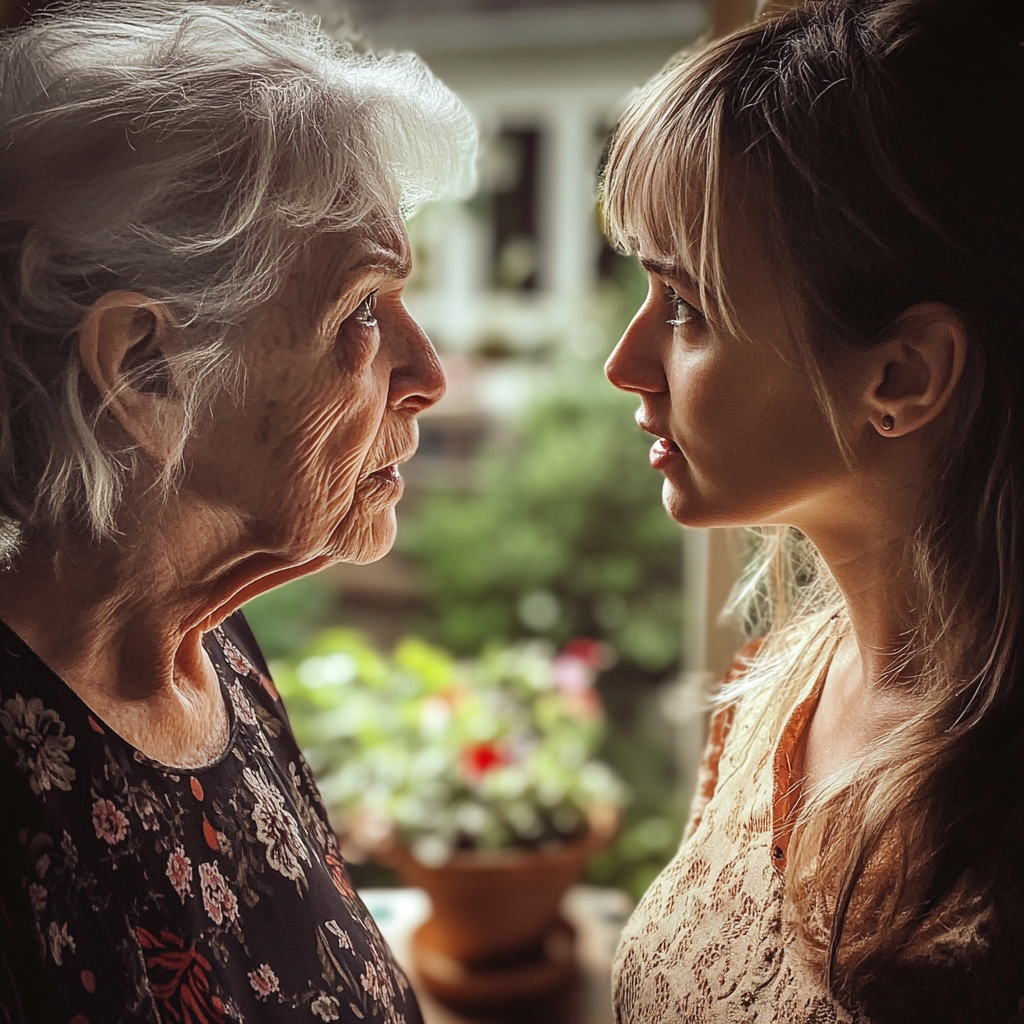
Guilty senior woman talking to her daughter in law | Source: Midjourney
Her lips trembled as she stammered, “I… I thought I was doing the right thing.”
I shook my head. “No, Jean. You didn’t.”
Without another word, I picked up Sophie, took Lucas by the hand, and led them into the house to gather their things. We were done here.
As we stepped outside, the crisp evening air hit my face, a stark contrast to the suffocating tension inside Jean’s house.

Woman walking away from her mother-in-law’s house | Source: Midjourney
Lucas clung tightly to my hand, and Sophie nestled into my arms, her head resting on my shoulder. Their silence was heavier than words, their little bodies weighed down by exhaustion.
“Please, Abby,” Jean called after us, her voice cracking. “Don’t be angry. They’ve learned so much. It was just… it was just a mistake.”
I stopped and slowly, I turned to face her. She stood in the doorway, her expression a mix of desperation and guilt. For a moment, I considered responding, but what could I say that would change anything? The damage was already done.
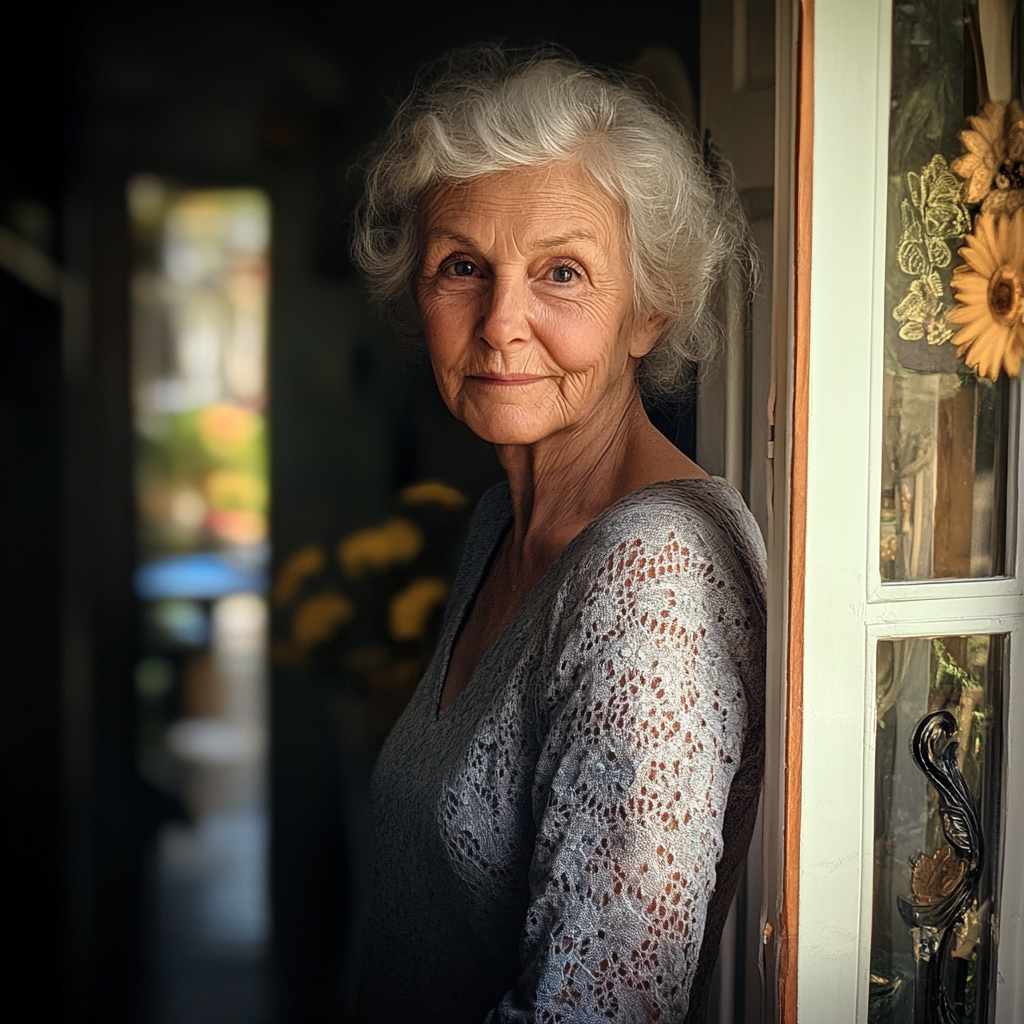
Guilty senior woman standing in her doorway | Source: Midjourney
“No, Jean,” I said finally, my voice firm but calm. “This wasn’t a mistake. This was a choice—a choice you made without thinking about what they needed. They’re children, not tools to fix your problems or lessons to prove your point.”
Jean opened her mouth to reply, but I shook my head, cutting her off. “I trusted you. And you broke that trust—not just with me, but with them. I won’t let this happen again.”
She looked down, her face crumpling, but I had no room for her regret at that moment. My kids needed me.

Woman walking away with her children | Source: Midjourney
As I walked to the car, Lucas finally broke the silence. “Mom?”
I looked down at him, my heart aching at the uncertainty in his voice. “Yeah, sweetheart?”
“Are we ever coming back here?” he asked softly.
I tightened my grip on his hand and said, “No, buddy. Not until Grandma learns how to treat you the way you deserve.”
Sophie stirred in my arms, whispering, “Good.”
And with that, I buckled them into the car and drove away, leaving behind the house, the garden, and a part of my trust I’d never get back.

Children inside a car | Source: Midjourney
If you liked this story, here’s another you’ll enjoy: “My MIL asked me to help cover her debt—What I discovered left me horrified.”
This work is inspired by real events and people, but it has been fictionalized for creative purposes. Names, characters, and details have been changed to protect privacy and enhance the narrative. Any resemblance to actual persons, living or dead, or actual events is purely coincidental and not intended by the author.
The author and publisher make no claims to the accuracy of events or the portrayal of characters and are not liable for any misinterpretation. This story is provided as “is,” and any opinions expressed are those of the characters and do not reflect the views of the author or publisher.



Leave a Reply